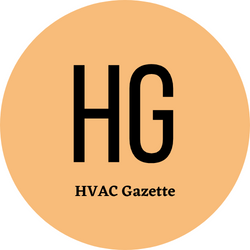HVAC (Heating, Ventilation and Air Conditioning)
by siteadmin

HVAC stands for Heating, Ventilation and Air Conditioning; more commonly it's becoming known to include refrigeration as an additional letter in its acronym.
HVAC systems play an essential role in homes, buildings and offices alike – they heat and cool the air while ventilating it and helping filter pollutants.
Heating
Heating and cooling are only part of an overall system designed to make you feel at ease in your home year-round. Other aspects include ventilation, filtration and cleaning of indoor air to improve its quality.
Although systems may differ slightly, all operate similarly: They bring fresh outdoor air in through intake ducts before passing it along through distribution ducts for heating or cooling before pushing it out the back door.
Heat pumps utilize refrigerant to absorb, transport, and release heat; this allows them to both heat and cool your home with just one unit. Furnaces and boilers produce heat by burning fossil fuels such as natural gas or propane for indoor temperature regulation. Furnace air handlers circulate the hot and cooled air formed by other HVAC units throughout your house so it reaches every room at your desired temperatures; additionally many systems now include ductless alternatives which don't require major renovations or even an existing duct system at all for convenient installations!
Cooling
Your HVAC cooling component takes in fresh air from outside and pushes it through ductwork into various rooms within your building, often filtering it to prevent pollutants or other contaminants from entering rooms. Newer ventilation systems use much smaller footprints than traditional ducts, enabling ductless alternatives with only minor renovation required for installation.
Even though HVAC and air conditioning are commonly used interchangeably, there are distinct differences between them. A complete HVAC system offers full heating and cooling control while an air conditioner only cools a space. An HVAC system uses boilers, furnaces or heat pumps powered by various energy sources to generate warmth for a room; then distributes that warmth using either ductwork or a central blower system.
Ventilation
Ventilation is the "V" in HVAC, providing fresh air to a space while extracting stale or polluted air through gaps and cracks or mechanical means such as ductwork and window units.
Air conditioning cools the air by evaporating refrigerant in an outdoor condenser unit and blowing it indoors through ductwork or vents, thus removing heat and moisture from the atmosphere while improving indoor air quality by filtering out dust, smoke, odors, allergens, VOCs (volatile organic compounds) from cleaning chemicals as well as VOCs from cleaning agents.
Based on climate and home design, systems may include heat pumps, furnaces or air handlers as sources of power for their operation. Some homes feature both heat pumps and furnaces to both absorb and transport energy while also cooling the house, while other properties only utilize an air conditioner that cools by evaporating freon like in refrigerators.
Thermostat
A thermostat is one of the most essential pieces of equipment in any home, controlling both heating and cooling systems. As an automatic low-voltage device that adjusts temperatures automatically, a thermostat also filters air within rooms by reducing humidity levels and improving indoor air quality.
Failing thermostats can render heating or cooling systems nonfunctional, leading to costly repairs or replacements that must be made quickly. Therefore, professional assistance should always be sought to assess a thermostat to avoid expensive repairs or replacements in the future.
Traditional thermostats consist of two different metals bolted together into a strip and acting as a bridge in an electrical circuit connected to the heating system. As heat infiltrates into a room, its heat causes this strip to bend slightly; once bent, current from this circuit flows to terminal G on the thermostat board which jumps across to terminal Y/O signaling the condenser to begin cooling the building.
https://www.hvacbountifulut.com/
heating and cooling companies bountiful
HVAC stands for Heating, Ventilation and Air Conditioning; more commonly it's becoming known to include refrigeration as an additional letter in its acronym. HVAC systems play an essential role in homes, buildings and offices alike – they heat and cool the air while ventilating it and helping filter pollutants. Heating Heating and cooling are only…
Recent Posts
- Condon Total Comfort, Inc. Offers Top-notch HVAC Services
- Clearing the Air: Duct Cleaning Alexandria Debunks Common Myths Surrounding Air Duct Cleaning
- Clearing the Dust: Duct Cleaning Louisville KY Shares Tips to Make Your Home Less Dusty
- Exploring the Drawbacks of Duct Cleaning: Insights from Air Vent Cleaning Charlotte
- Grand Prairie HVAC Service: Your Trusted HVAC Company in Texas
